Buenos Aires is not specifically known as a health and wellness destination. Rather than food, it’s more renowned for the health-centric tea, Yerba Mate. Plus, in this city you’ll find good fitness clubs, empanadas, Italian cuisine, and very decent vegan/vegetarian options. In early 2018, it was a pricey destination due to economic collapse and the resulting inflation. Quality restaurant food, and even fruits and vegetables, all became quite expensive. Now in 2019, its more affordable due to further weakening of the Argentine Peso.
Contents
Yerba Mate in Buenos Aires
You’ll find Yerba Mate in every grocery store shelf in Argentina. This is a tea consisting of the leaves of the Ilex paraguariensis plant, often blended with other herbs. Around 500ml to 1 liter of water is consumed along with each cup (or gourd) of Yerba Mate. Thus it’ll keep you hydrated and provide vitamins while helping you flush out toxins from your body. The health shops stock organic yerba mate. While supermarkets have long rows of regular Yerba Mate brands. Some flavored artificially, others with herbs like lavender, mint, chamomile, orange peel, and verbena.
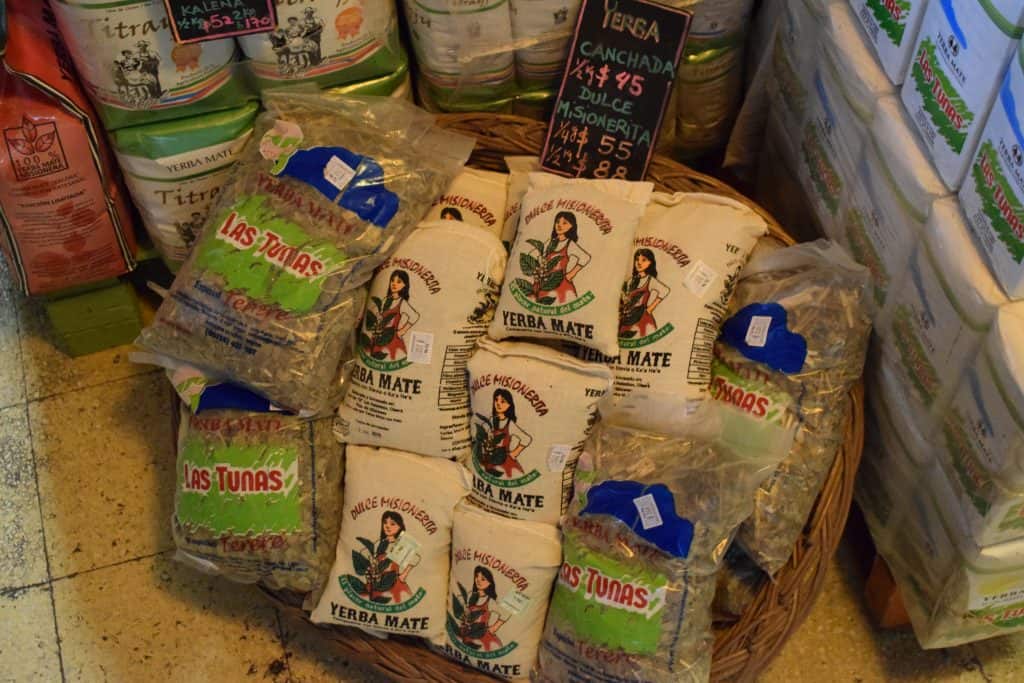
Yerba Mate innovations which you won’t find anywhere else in the world include unusual Mate Gourd designs (e.g. latex or ceramic gourds); disposable thermal flasks; unique bombillas (the mate straw); kettles with a setting to boil the water at the perfect temperature for Yerba Mate; Yerba Mate disposers at hotels, and Yerba mate hot water vending machines. For Spanish language learners, there is a weekly Yerba Mate Language Meetup in the city center.

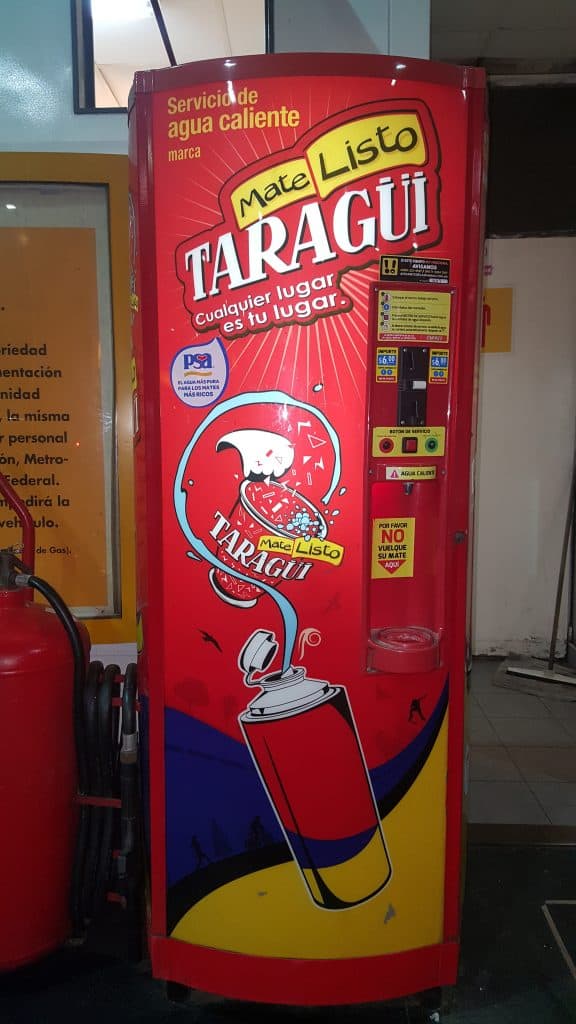
For more Yerba Mate related Photos, check out @chasingyerba on Instagram.
Artificial Fluoride in Mineral Water
If you drink Yerba Mate, you’re going to need clean drinking water. Since tap water is boiled, it is considered good enough for Yerba Mate. Argentina is one of the countries with the worst bottled mineral water that I’ve ever traveled in. Most of the popular brands of mineral water contain added Sodium-Fluoride (“agua mineral fluorada”). Thus, you could simply drink the equally imperfect tap water, and you won’t contribute as much to plastic pollution. If you brush your teeth, there is no added health benefit to Sodium-Fluoride in your drinking water. Bottled water can also be expensive, with 2-liter bottles costing only a few pesos more than 500ml bottles.
Where to Work out in Buenos Aires
There are plenty of affordable workout options all over Buenos Aires. To give you an idea of prices, Omnium gym in Palermo is 200 pesos ($10) per day or 600 pesos per week. However, Always Gym seemed like the best option in Palermo. For 150 pesos, you could use the gym and include a free Crossfit class in your workout. The weekly rates were also reasonable. Crossfit runs every hour in the evening. But, from about 5h30pm, the gym gradually gets too crowded inside. Visit during the day or late at night before closing hours instead. In the same road next to Always, you’ll find the Brooklyn Fitboxing gym – an unusual new way to keep fit. Lastly, Gym Hakkyo has a few branches in Buenos Aires, but the branch I visited was too small with not enough equipment nor space.
Argentina’s Most Popular Sport
The most popular sport in Buenos Aires is soccer, with rugby in second place. Apparently, the poorest Argentinians play soccer, while the middle to upper classes are more likely to play rugby. If you want to train rugby in Buenos Aires, you’d have to go to the suburbs. There isn’t a rugby club in the safer, central zone of the city (next to the river). However, it can be a hassle to get around due to traffic congestion and commuting time in the subway train or “Subte”.
Wholefood shops
It’s easy to find wholefood shops in the upmarket neighborhoods of Buenos Aires, such as Palermo. Most of these shops are tiny and owner-run. Zoja is a medium-sized organic food store close to Palermo Metro with good variety. Another similar larger shop is Club Saludable at Callao Street in the city center.
Closer to the central square of Palermo (Plaza Serrano) there is a small friendly shop with relatively good prices: Dietetica Nonna Sapori. And opposite the road, you’ll find green juice at Tomo juice bar. The best green juice and smoothies are at The Factory in Palermo (El Salvador Street). There is another branch in Recoleta. Green juice is an effective way of boosting your nutrition while traveling in this city where fresh fruit, vegetables, and healthy restaurant meals are too expensive.
The Solidarity Market Bonpland in Palermo is worth checking out for interesting local gourmet health products including wholemeal cookies, artisanal yerba mate, vegan cakes, chimichurri sauces, local spices, and other snacks.

There are plenty of small Dieteticas Tomy stores in Buenos Aires offering nuts, dried fruit, and other health products. But to get the best prices it’s helpful to buy in bulk at one of the El Portugues dried fruit and nut branches in the city.
Buenos Aires Food
Besides empanadas, other mainstream foods are pizza, pasta, and Milanese (crumbed meat fillets topped with cheese). There is clearly a strong Italian influence in Argentinian food. You’ll find organic, vegetarian and vegan restaurants in upmarket neighborhoods such as Palermo, some better than others. Loving Hut in Buenos Aires is a vegan junk food restaurant. It sells ordinary vegan hamburgers and french fries. There are a few other options such as seitan steak, but it was bland. Even the green juice was terrible. It contained a lot of sugar, with maybe one or two small leaves of spinach. I’d definitely skip this restaurant in Buenos Aires. Loving Hut in other cities such as Cusco was much better.
On the other hand, there are some good but very expensive vegan/vegetarian options such as Buenos Aires Verde. Food prices can be disproportionately high in this city, and you are going to have to pay-up in the upmarket restaurants. A more affordable choice is the pay-by-weight restaurants. These are plentiful in Buenos Aires. You can select meat or soya-meat, add broccoli, salad or other vegetables, and pay by the weight of the plate. Since it’s up to you what exactly ends up on your plate, the price-to-value ratio is quite high. Lastly, Pizza Vegana vegan pizzas are also a decent option.
Empanadas
Empanadas are popular in Buenos Aires. You’ll find vegan empanadas made with tofu at some of the healthier restaurants and health shops. Mainstream empanadas are not healthy and not recommended for flexitarians since its made with white flour, some unhealthy sauce, and low-quality meat. For vegetarians, there are options like cheese and onion, Roquefort cheese, and white sauce with mushrooms. Vegan options can only be found in the health shops. A small selection of wholewheat empanadas are available in some of the empanada shops.
Apart from empanadas, for the budget traveler Subway is another option. Try the less processed meat options such as roast beef slices, tuna, or a vegetarian sub, along with salad on whole-wheat bread. I only mention this due to how expensive restaurants have become in Argentina. And the quality of the food often doesn’t correlate with the prices.
Buenos Aires Food Market
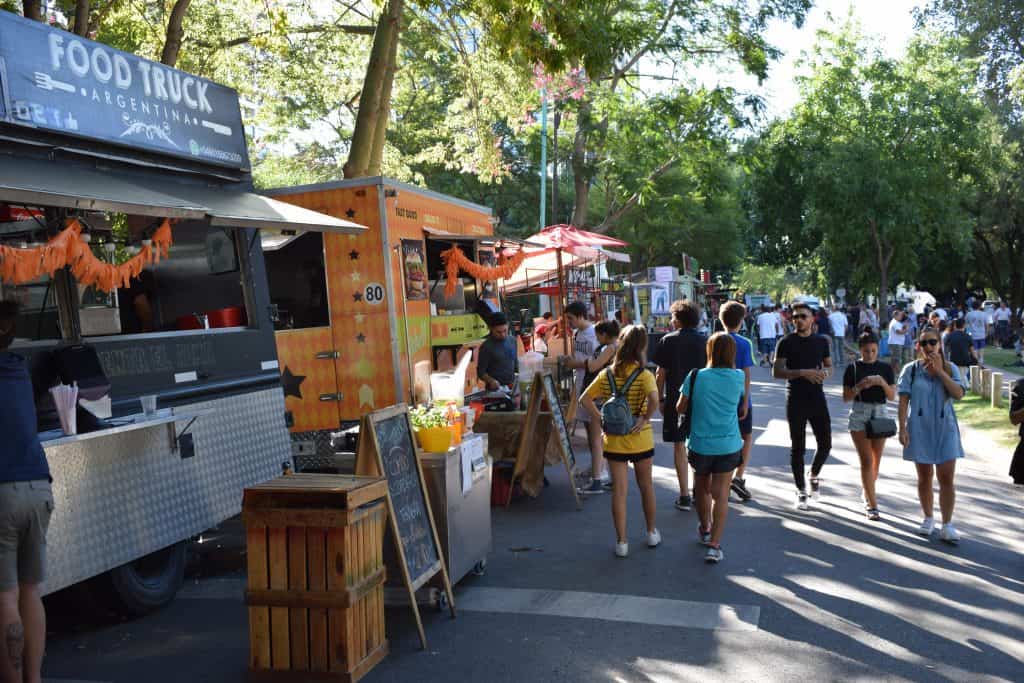
The best food market in Buenos Aires was during the weekend in Belgrano. You’ll find typical Latin American foods like burritos, organic Yerba Mate and herbal tea. Also honey, olives, focaccia bread, vegan food, and snacks. The location of the Buenos Aires Food Market differs every weekend (Check out their website: www.buenosairesmarket.com for more details).
Other Buenos Aires Info
General tourist highlights include the Recoleta Cemetary, San Telmo neighborhood, La Boca (of which only the small central touristic part is safe), Tango, and Assado (Argentinian barbecue). Public transport is cheap and consists of a bus and underground train (“Subte”) system.
Where should you stay in Buenos Aires? Palermo is upmarket as well as the most tourist friendly. Recoleta is reasonably central and quite safe, but more boring than Palermo. San Telmo is a poorer neighborhood with more crime. Otherwise, there are plenty of hotels in Downtown, but this area is very industrial. However, with the Subte (metro train) you’ll be well-connected to the rest of the city. Lastly, Belgrano is upmarket and the most European looking neighborhood, but it’s purely residential and not touristic at all, apart from the one street Barrio Chino (China Town).
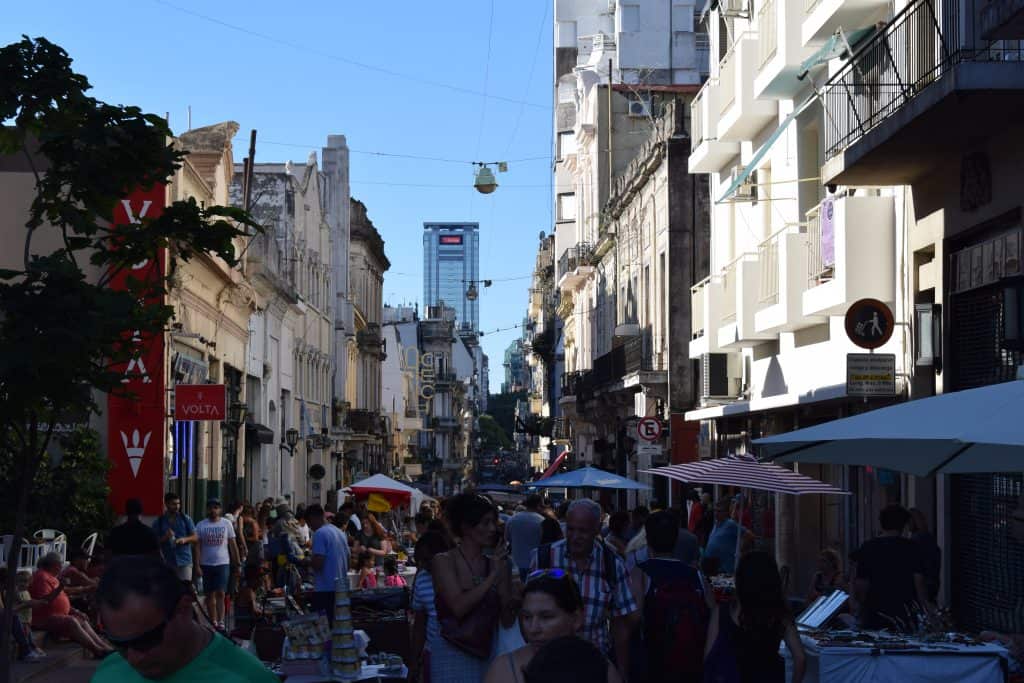
Other Cities of Argentina
You get pretty much the same type of food in the rest of Argentina as you get in Buenos Aires. The whole country is quite vegetarian-friendly (as most countries are nowadays). However vegans may have a harder time over here since most food, even sushi, contain cheese. Travel options include Cordoba, which is Argentina’s second largest (and very Spanish) city. Then there is Mendoza, the tranquil city in the wine region of Argentina (which also has a lot of outdoor activities). Also Patagonia, with cities like Ushuaia and Bariloche – popular with hikers (and skiing in the winter). You could do a boat trip to Antarctica in the summer months. With luck, it’ll be about $4000 if you show up in Ushuaia and enquire about a last minute trip.
Towards the north of Argentina, the Iguazu falls is worth visiting. Iguazu Falls Town is in Brazil, but it’s right next to Argentina’s side of these famous waterfalls, which is called Puerto Iguazu. Most people will agree the Brazilian side of the falls is better.
In general, the north of Argentina isn’t that touristic. You could try Salta, although the city itself is boring. Outside of the city you’ll find some hiking and outdoor activities. Yerba Mate is produced in the north-eastern Misiones Province. The capital of which is Posadas. It’s not a touristic city, and the Yerba Mate farms are only really accessible to Spanish speakers.
Montevideo (Uruguay) is close to Buenos Aires, both in culture and distance, thus you might even mistake it to be part of Argentina. It’s worth a short trip if you have the time.
Buenos Aires Health Travel Junkie Scale
Fitness activities – 8.5
Plenty of gyms, and other fitness options such as Yoga and Crossfit with inexpensive day-passes.
Food – 6
Quality restaurants are expensive, the rest of the restaurants serve lower quality food with very basic ingredients to cut costs.
Cost of traveling – 7
Accommodation is still very affordable, along with public transport which is almost free. Food and clothes were disproportionately expensive in January 2018. But I’ve heard prices are much better now.
Other Wellness-related activities – 8.5
For example, drinking Yerba Mate
Overall rating: 75%
Health Travel Junkie Challenge – Buenos Aires
Drink Yerba Mate. Buy a cheap disposable Yerba Mate at the grocery store or otherwise borrow someone else’s Mate Gourd and Bombilla. If you are not currently in Argentina, you can order high-quality organic yerba mate tea online from I-Herb. Even if you don’t have access to a mate gourd and bombilla straw, you could easily prepare a yerba mate tea drink with a French Press as well.
What are your questions about the health and wellness scene in Buenos Aires? If you’ve already visited, do you have any other tips for wellness travelers planning a trip to Argentina? Comment below 🙂
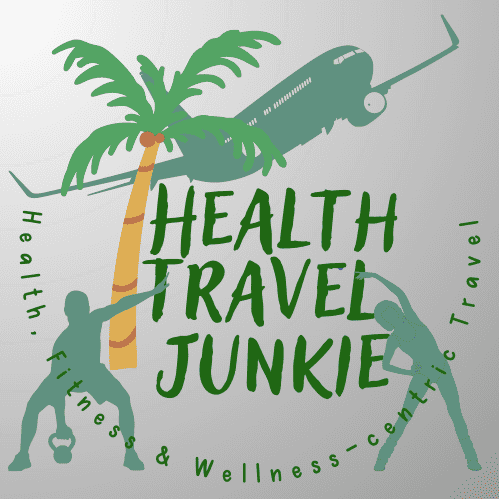
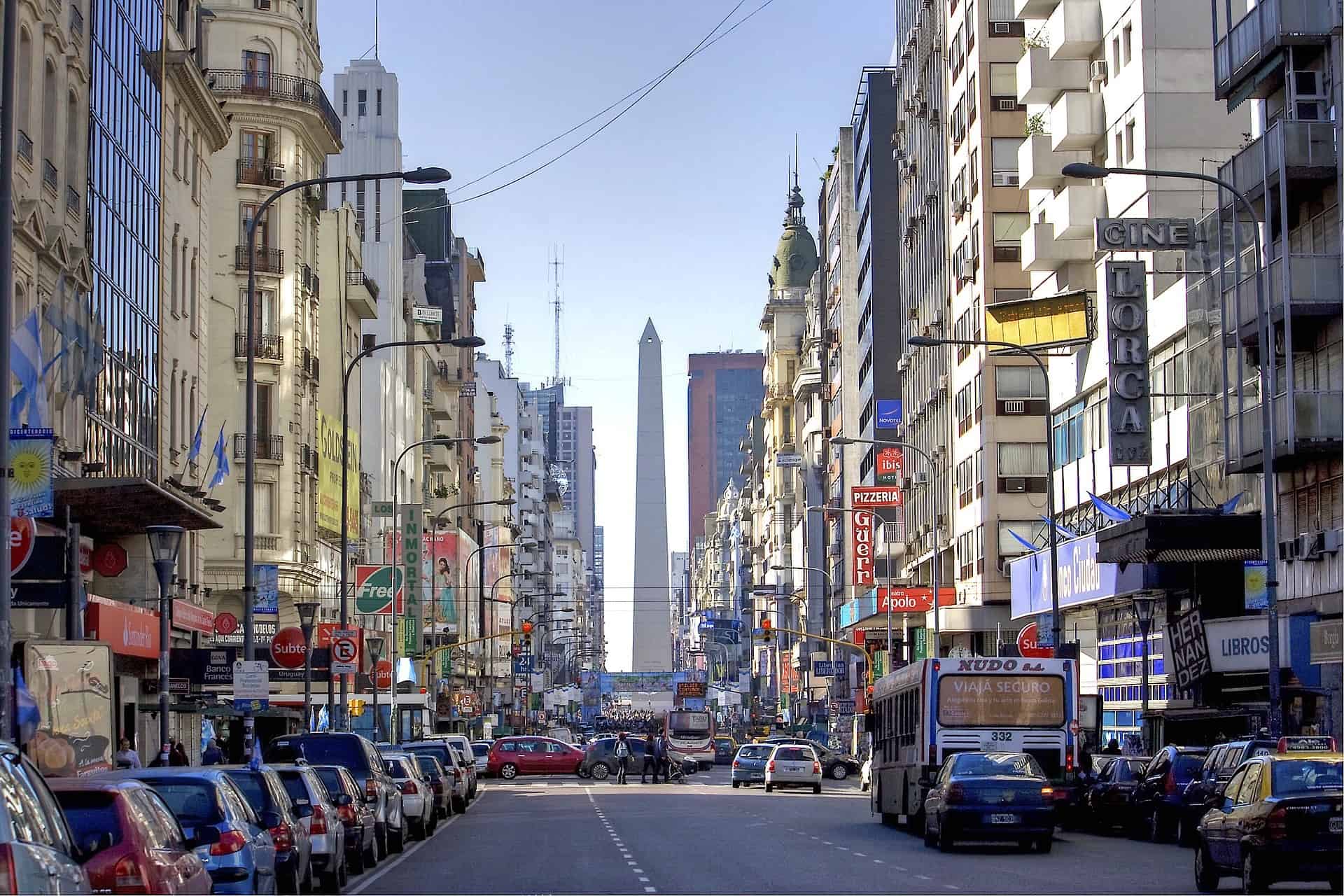
Great Post! Thank you for sharing useful information. We are also a provider of Bariloche trip planning. Visit our website for more info https:www.insituviajes.com